|1.06Mins Read
The Power of Normalization vs. Denormalization
- Authors

- Name
- Abhishek Thakur
- @abhi_____thakur

Why Schema Design Matters
Database schema design is foundational to system performance, scalability, and feature development. A well-crafted schema:
- Accelerates product velocity by reducing technical debt.
- Adapts to growth, avoiding bottlenecks from 10K to 10M+ users.
- Prevents painful refactors by aligning structure with long-term goals.
The Core Dilemma: Normalize or Denormalize?
Teams face a critical choice:
Normalized Schemas
- Prioritize data integrity and minimal redundancy.
- Ideal for transactional systems requiring consistency (e.g., banking).
- Enforce rules through normal forms (1NF, 2NF, 3NF, etc.).
Denormalized Schemas
- Optimize read performance and simplify queries.
- Trade-off: Potential redundancy for speed at scale (e.g., analytics dashboards).
- Common in NoSQL or read-heavy systems.
Navigating the Trade-offs
Normalization Strengths:
- Maintainable, ACID-compliant, and mutation-friendly.
- Weakness: Complex joins can slow queries.
Denormalization Strengths:
- Fast reads, simple access patterns, and horizontal scalability.
- Weakness: Updates require careful synchronization.
Key Takeaways
- No Silver Bullet: Use normalization for integrity, denormalization for performance.
- Hybrid Approaches: Many systems blend both (e.g., normalized writes + read-optimized caches).
- Evolution Required: Revisit schemas as usage patterns and scale change.
Next steps: Audit your current schema’s pain points—slow queries, rigid migrations, or redundancy—to guide your strategy.